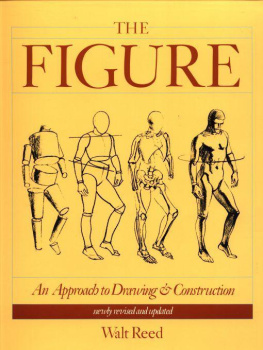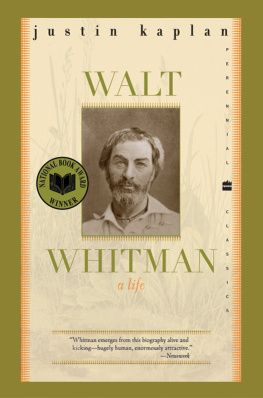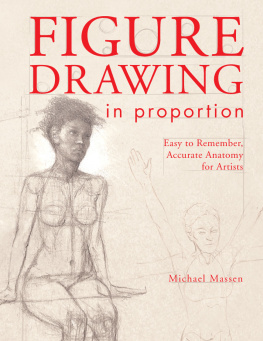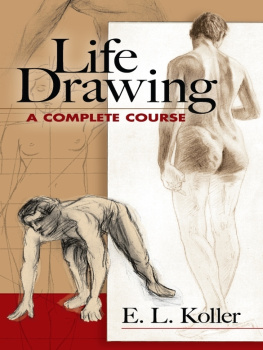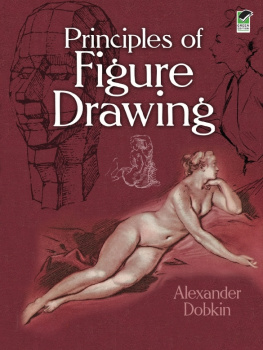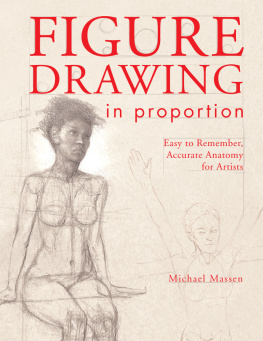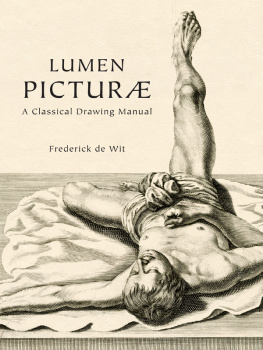Table of Contents
The Figure . Copyright 1976, 1984 by Fletcher Art Services, Inc. Printed and bound in the United States of America. All rights reserved. No part of this book may be reproduced in any form or by any electronic or mechanical means including information storage and retrieval systems without permission in writing from the publisher, except by a reviewer, who may quote brief passages in a review. Published by North Light Books, an imprint of F&W Publications, Inc., 1507 Dana Avenue, Cincinnati, Ohio 45207. (800) 289-0963. Revised softcover edition 1984.
Other fine North Light Books are available at your local bookstore, art supply store or direct from the publisher.
03 02 01 00 15 14 13 12
Library of Congress Cataloging-in-Publication Data
Main entry under title:
The Figure.
1. Human figure in art. 2. Drawing-Instruction. I. Reed, Walt.
NC765.F53 743.4 76-4545
ISBN 0-89134-097-1
Dedicated to the long roster of friends and colleagues from the Guiding Faculty and instruction staff of the Famous Artists School, whose teaching methods, evolved and tested over more than twenty years, developed much of the information presented in this book.
Dancing Faun, antique bronze, National Museum, Naples. (Alinari)
INTRODUCTION
The Human Figure
There is no other vehicle so subtle or so effective for the expression of human thoughts and emotions as the human figure.
The artist who has mastered drawing of the human figure can call human personalities to life at will, and depict the specific attitudes, actions, mood, and emotions which will best express the situation he wants to portray. He transports the viewer to a world that may be far removed from immediate experience, and enables him to live, momentarily, an imaginary existence with imaginary people. The great artists are dramatists in paint, who can help their fellow men bridge the gap between imagination and reality.
From previous attempts, you may have concluded that drawing the figure is extremely difficult. This book will show you that it can be much easier than you think. But you must be willing to progress one step at a time, mastering each step as you go along.
The chief reason most students have trouble mastering the human figure is very simple: They want to start right off by drawing a fully clothed model in a complicated pose. They spend a great deal of time worrying about details of features, anatomy, and drapery. They try to capture the expression on the models face, get a good likeness, and render textures convincingly. But in their concern about these details they lose all sense of proportion, construction and, most of all, the solid form of the figure.
The soundest way to approach the problem of drawing the human figure is to begin with a very clear concept of the basic form. The human body is not a two-dimensional symbol on a flat surface; nor is it a paper doll with such decorative details as hair, eyes, teeth, clothes, shoes, etc., drawn on top of it. The human figure is first and primarily a three-dimensional object, a solid object with bulk and weight. It is as three-dimensional as a piece of sculpture in wood, marble, or bronze.
This solid form of the human body looks complex. It is obviously not a single sphere or cube or cylinder. But when we examine it we discover that this complex form is actually a combination of very simple forms which anyone can draw. Once you can draw those forms well, you will have no difficulty putting them together to make the total human form.
This chapter will show you how to analyze the human figure in terms of these simple, basic forms. It will show you what the proportions of these individual forms are, in relation to the total form. It will illustrate the methods by which these individual forms are connected, and demonstrate how the parts move. In other words, we will explore the basic construction of the figure. Then you will be shown how to draw this basic human form in any position, engaged in any kind of activity. Concentrate on this basic form figure until you can do anything you want with it. Draw it in as many positions as possible. Look for it in photographs of people, paintings, and above all in the people you see around you.
In the following chapters detailed studies of anatomy will be presented, examining the bone and muscle structures which hold the basic form together and make it move. This book will also consider special problems involved in drawing individual parts of the body, such as the head, the hands, and the feet.
The information presented in this chapter is so important that it is not enough for you merely to read it. You should actually memorize every detail thoroughly. You can do this most effectively simply by making dozens of drawings. Most of these practice drawings can be done in just a few minutes. Practice of this kind will help train your hand and your mind in the proportions, construction, and relationships of the individual forms so that you will never forget them.
These essential facts about the human form are as basic and invaluable to you, as an artist, as the simple multiplication table is to the mathematician. You may be drawing the human figure the rest of your life, so build your knowledge and control of it as solidly as you can.
CHAPTER 1
The basic form figure
Leonardo DaVincis 8 head human proportions.
The basic form figure on the left demonstrates the all-important principle emphasized throughout this book the fact that the human body is made up of simple, solid forms. The basic form figure presents the body in its essential masses. Every distracting element has been eliminated. Think of the form figure as if it were carved out of heavy wood; it is solid, three-dimensional. In this drawing the form figure has been pulled apart, or exploded, to emphasize the various separate elements. They consist of head and neck; upper torso and lower torso; upper arms, lower arms, and hands; upper legs, lower legs, and feet.
Compare the form figure with the photograph of the living model to its left. Note that the model and the basic form figure are similar in basic mass and construction, with the same association of parts. In both model and form figure the neck, the arms, the legs, and the torso are essentially modified cylinders. The head is basically a simple sphere. The hands can be reduced to cubic forms, while the feet are combined cone and cube forms.
It is extremely important in the beginning to view the body in terms of these simple, basic forms, understanding the essential masses of the separate parts, and placing these in their proper proportions and relationships. For the present you can ignore hair and features, as well as the more subtle curves resulting from underlying bone and muscular structure. Once you can control and draw the basic forms properly, you will have little trouble drawing the details of these forms.

